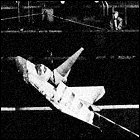 The Soviet Union launches a scaled-down test model of a compact space shuttle design into orbit, part of an ultimately abandoned study of a vehicle design called Spiral. The BOR4 structural test article is photographed being recovered from the Indian Ocean by the Australian government, revealing the design to the western world for the first time. NASA begins a study of the BOR4 lifting body design, finding that it has a stable flight profile and unusually good reentry and landing characteristics, and though NASA’s version of the vehicle, HL20, is later mooted as a shuttle replacement, both countries’ space agencies pass on the design, which will later be revived by Sierra Nevada Corporation as the Dream Chaser. BOR4 is launched three more times through 1984, at which point the Soviets instead press ahead with development of Buran, a near-exact copy of the American Space Shuttle.
The Soviet Union launches a scaled-down test model of a compact space shuttle design into orbit, part of an ultimately abandoned study of a vehicle design called Spiral. The BOR4 structural test article is photographed being recovered from the Indian Ocean by the Australian government, revealing the design to the western world for the first time. NASA begins a study of the BOR4 lifting body design, finding that it has a stable flight profile and unusually good reentry and landing characteristics, and though NASA’s version of the vehicle, HL20, is later mooted as a shuttle replacement, both countries’ space agencies pass on the design, which will later be revived by Sierra Nevada Corporation as the Dream Chaser. BOR4 is launched three more times through 1984, at which point the Soviets instead press ahead with development of Buran, a near-exact copy of the American Space Shuttle.
 ABC airs the 28th episode of Stephen J. Cannell’s superhero comedy series The Greatest American Hero, starring William Katt, Connie Sellecca, and Robert Culp. Chuck McCann (Far-Out Space Nuts) and Danny Wells (Super Mario Brothers Super Show) guest star.
ABC airs the 28th episode of Stephen J. Cannell’s superhero comedy series The Greatest American Hero, starring William Katt, Connie Sellecca, and Robert Culp. Chuck McCann (Far-Out Space Nuts) and Danny Wells (Super Mario Brothers Super Show) guest star.
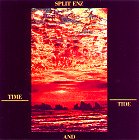 The seventh album from Split Enz,
The seventh album from Split Enz, 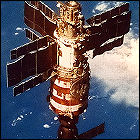 The Soviet Union launches the last of the Salyut space stations, Salyut 7, into Earth orbit. Reflecting an ongoing significant rethink on space station construction, Salyut 7 is intended from the outset to be docked with additional modules to expand its habitable and working space. It also sets a new endurance record of its own, remaining in orbit for nearly a decade.
The Soviet Union launches the last of the Salyut space stations, Salyut 7, into Earth orbit. Reflecting an ongoing significant rethink on space station construction, Salyut 7 is intended from the outset to be docked with additional modules to expand its habitable and working space. It also sets a new endurance record of its own, remaining in orbit for nearly a decade.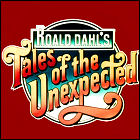 ITV airs the 52nd episode of the anthology series Tales Of The Unexpected. Toyah Wilcox guest stars in the fifth season finale, which is adapted from the winning story in an amateur writing contest in which it was up against 11,000 other entries.
ITV airs the 52nd episode of the anthology series Tales Of The Unexpected. Toyah Wilcox guest stars in the fifth season finale, which is adapted from the winning story in an amateur writing contest in which it was up against 11,000 other entries. Better known for making jukeboxes and speakers, Rock-Ola makes one of its final attempts to break into the video game industry by releasing
Better known for making jukeboxes and speakers, Rock-Ola makes one of its final attempts to break into the video game industry by releasing  Capitol Records releases the
Capitol Records releases the 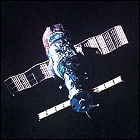 Soyuz T-5 lifts off from the Soviet Union, carrying its crew of two to the new Salyut 7 space station for a long-term stay. Cosmonauts Anatoli Berezovoy and Valentin Lebedev become Salyut 7’s first occupants, remaining aboard the station for a record-setting 211 days (almost seven months), not returning until December 1982. During that time, the two cosmonauts host two other visiting crews and launch a small amateur radio communications satellite by ejecting it from a small airlock.
Soyuz T-5 lifts off from the Soviet Union, carrying its crew of two to the new Salyut 7 space station for a long-term stay. Cosmonauts Anatoli Berezovoy and Valentin Lebedev become Salyut 7’s first occupants, remaining aboard the station for a record-setting 211 days (almost seven months), not returning until December 1982. During that time, the two cosmonauts host two other visiting crews and launch a small amateur radio communications satellite by ejecting it from a small airlock.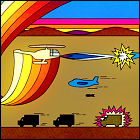 Activision releases the
Activision releases the  Exidy’s utterly bizarre coin-op video game
Exidy’s utterly bizarre coin-op video game  The Soviet Union launches a scaled-down test model of a compact space shuttle design into orbit, part of an ultimately abandoned study of a vehicle design called Spiral. The BOR4 structural test article is photographed being recovered from the Indian Ocean by the Australian government, revealing the design to the western world for the first time. NASA begins a study of the BOR4 lifting body design, finding that it has a stable flight profile and unusually good reentry and landing characteristics, and though NASA’s version of the vehicle, HL20, is later mooted as a shuttle replacement, both countries’ space agencies pass on the design, which will later be revived by Sierra Nevada Corporation as the Dream Chaser. BOR4 is launched three more times through 1984, at which point the Soviets instead press ahead with development of
The Soviet Union launches a scaled-down test model of a compact space shuttle design into orbit, part of an ultimately abandoned study of a vehicle design called Spiral. The BOR4 structural test article is photographed being recovered from the Indian Ocean by the Australian government, revealing the design to the western world for the first time. NASA begins a study of the BOR4 lifting body design, finding that it has a stable flight profile and unusually good reentry and landing characteristics, and though NASA’s version of the vehicle, HL20, is later mooted as a shuttle replacement, both countries’ space agencies pass on the design, which will later be revived by Sierra Nevada Corporation as the Dream Chaser. BOR4 is launched three more times through 1984, at which point the Soviets instead press ahead with development of 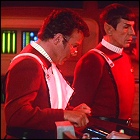 Produced and co-written by Harve Bennett (
Produced and co-written by Harve Bennett ( Imagic, recently formed from another wave of ex-Atari employees, releases its second wave of game cartridges for the Atari VCS, including
Imagic, recently formed from another wave of ex-Atari employees, releases its second wave of game cartridges for the Atari VCS, including 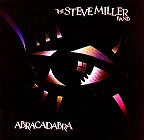 Capitol Records releases the
Capitol Records releases the 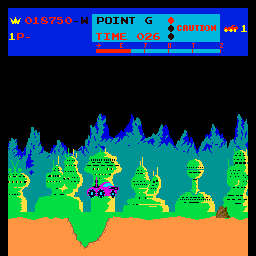 Williams Electronics unleashes an arcade favorite in the making,
Williams Electronics unleashes an arcade favorite in the making, 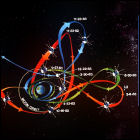 Its primary mission satisfactorily completed, the NASA/ESA ISEE-3 (International Sun-Earth Explorer 3) satellite has a surplus of maneuvering fuel left over, and is given a new mission: it begins a series of over a dozen maneuvers utilizing both thrusters and gravity-assists, intended to push it out of its LaGrange point between Earth and the sun and toward a 1985 rendezvous with Comet Giacobinni-Zinner. Upon its final maneuver in 1983, ISEE-3 will be renamed ICE (International Cometary Explorer) and, after the complex series of course changes, will be perfectly targeted for its 1985 comet encounter.
Its primary mission satisfactorily completed, the NASA/ESA ISEE-3 (International Sun-Earth Explorer 3) satellite has a surplus of maneuvering fuel left over, and is given a new mission: it begins a series of over a dozen maneuvers utilizing both thrusters and gravity-assists, intended to push it out of its LaGrange point between Earth and the sun and toward a 1985 rendezvous with Comet Giacobinni-Zinner. Upon its final maneuver in 1983, ISEE-3 will be renamed ICE (International Cometary Explorer) and, after the complex series of course changes, will be perfectly targeted for its 1985 comet encounter.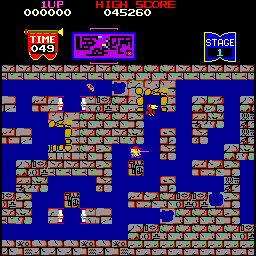 Konami introduces the arcade game
Konami introduces the arcade game 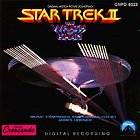 Atlantic Records releases an album of selections from
Atlantic Records releases an album of selections from 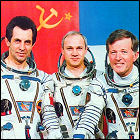 The Soviet Union launches the Soyuz T-6 mission on a week-long flight into orbit, including a visit to space station Salyut 7. Cosmonauts Vladimir Dzhanibekov, Aleksandr Ivanchenkov and Jean-Loup Chretien – the latter being the first Frenchman in space – spend several days aboard Salyut 7 performing experiments. Chretien would fly on later missions aboard Mir and the American Space Shuttle.
The Soviet Union launches the Soyuz T-6 mission on a week-long flight into orbit, including a visit to space station Salyut 7. Cosmonauts Vladimir Dzhanibekov, Aleksandr Ivanchenkov and Jean-Loup Chretien – the latter being the first Frenchman in space – spend several days aboard Salyut 7 performing experiments. Chretien would fly on later missions aboard Mir and the American Space Shuttle.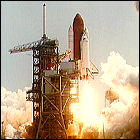 Space Shuttle Columbia lifts off for the fourth and final shuttle “test flight” before NASA’s Space Transportation System is declared fully operational. Remaining in orbit for a full week, Commander Ken Mattingly and Pilot Henry Hartsfield deliver the shuttle program’s first payload for the Department of Defense, as well as some of the first student-submitted experiment packages flown in the shuttle program. Both of Columbia’s solid rocket boosters, which are considered a reusable part of the launch vehicle, are lost at sea when their parachutes fail to deploy after separation and the boosters slam into the Atlantic Ocean; neither of the rockets are able to be recovered.
Space Shuttle Columbia lifts off for the fourth and final shuttle “test flight” before NASA’s Space Transportation System is declared fully operational. Remaining in orbit for a full week, Commander Ken Mattingly and Pilot Henry Hartsfield deliver the shuttle program’s first payload for the Department of Defense, as well as some of the first student-submitted experiment packages flown in the shuttle program. Both of Columbia’s solid rocket boosters, which are considered a reusable part of the launch vehicle, are lost at sea when their parachutes fail to deploy after separation and the boosters slam into the Atlantic Ocean; neither of the rockets are able to be recovered.